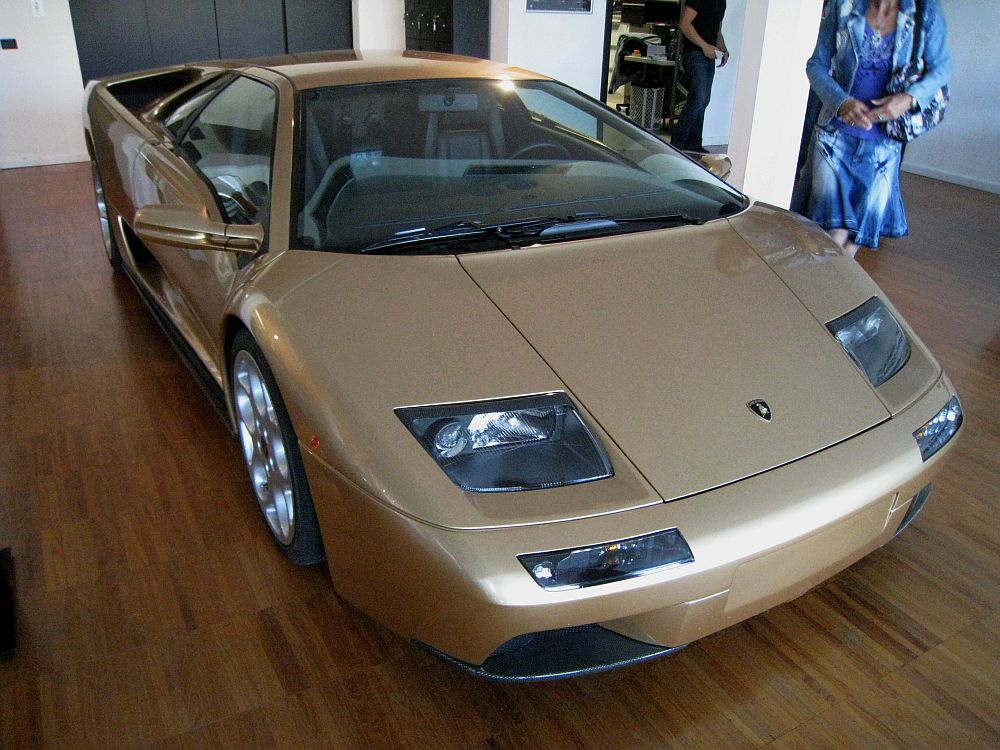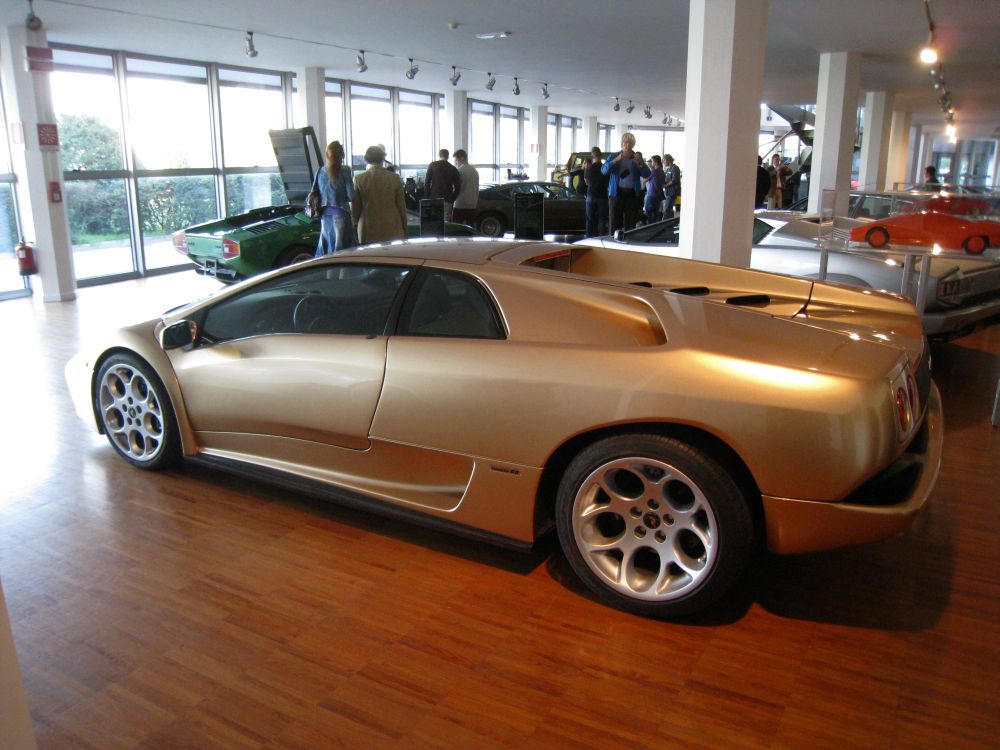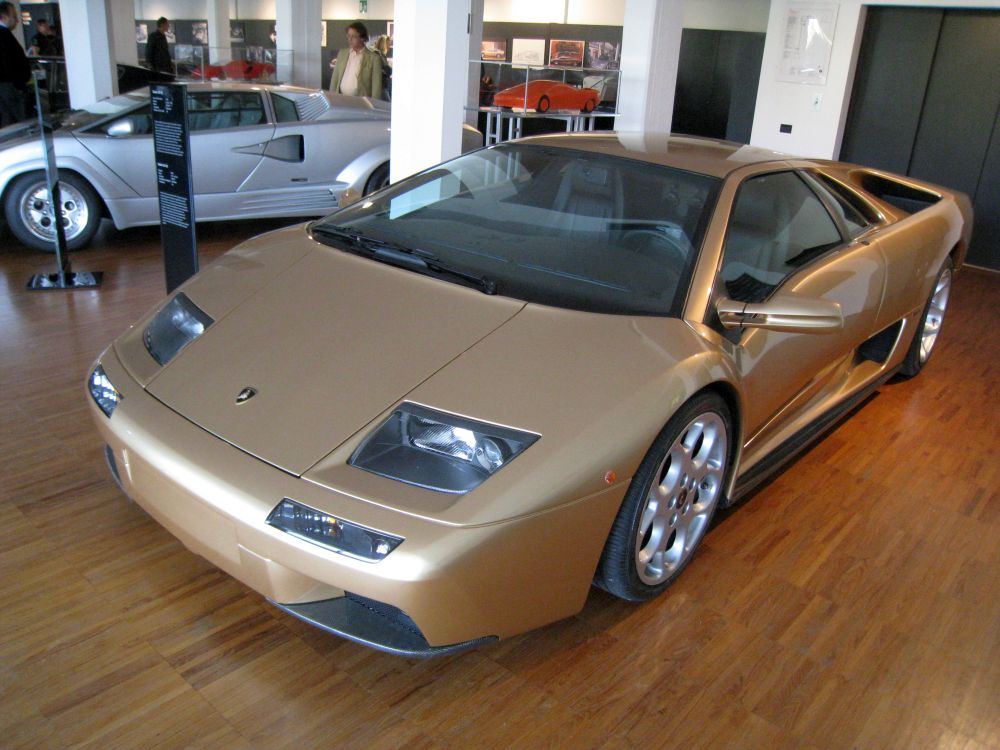Description
The Lamborghini Diablo VT 6.0 SE, introduced in 2001, was the ultimate and final evolution of the Diablo lineage—a car that marked the end of an era for Lamborghini’s iconic V12 before the arrival of the Murciélago. It was both a farewell and a celebration, the most refined, luxurious, and technically advanced Diablo ever built. The “SE” designation stood for Special Edition, and only 42 examples were produced, making it one of the rarest and most collectible Diablos in existence. The VT 6.0 SE represented the culmination of a decade of continuous development, combining the raw character of the early Diablos with the precision and craftsmanship of Lamborghini’s new Audi-backed era.
The Diablo VT 6.0 SE was derived from the Diablo VT 6.0 introduced the previous year, which itself marked a major transformation in the model’s design and engineering. Following Audi’s acquisition of Lamborghini in 1998, significant resources were devoted to refining the Diablo’s platform to meet modern supercar standards. The car received extensive reworking by Luc Donckerwolke, Lamborghini’s new chief designer, whose clean, sculpted approach gave the aging Diablo a more cohesive and aerodynamic appearance while preserving its dramatic identity. The SE version represented the final, most exclusive expression of this transformation.
Under the engine cover lay the largest and most advanced V12 engine ever fitted to a Diablo—a 6.0-litre, 60-degree, 48-valve masterpiece derived from the limited-production Diablo GT. With a displacement of 5,992 cc, it produced 550 horsepower at 7,100 rpm and 620 Nm of torque at 5,500 rpm. The engine featured titanium connecting rods, a new variable valve timing system, and an improved Bosch Motronic ME 7.0 engine management system, giving it smoother throttle response and greater efficiency than its predecessors. Mated to a five-speed manual gearbox and permanent all-wheel drive, the Diablo VT 6.0 SE could accelerate from 0 to 100 km/h (62 mph) in just 3.9 seconds and reach a top speed of 335 km/h (208 mph).
The chassis and suspension were refined to deliver both sharper handling and superior ride quality. The fully independent suspension employed double wishbones, electronically adjustable dampers, and anti-roll bars, while the car rode on lightweight OZ Racing alloy wheels wrapped in massive Pirelli P Zero tyres—245/35 ZR18 at the front and 335/30 ZR18 at the rear. Braking was handled by large ventilated discs with four-piston calipers, offering superb stopping power and balance. The VT (Viscous Traction) system distributed torque seamlessly between the front and rear axles, enhancing stability and grip under all conditions. These updates gave the SE remarkable composure, combining ferocity with fluidity in a way no previous Diablo had achieved.
The design of the Diablo VT 6.0 SE was both aggressive and elegant. Donckerwolke’s revisions gave the front end smoother, integrated lines with new air intakes and a more pronounced splitter, while the rear featured a reshaped bumper and larger cooling ducts. The bodywork used extensive carbon-fiber elements, including the engine lid and front and rear fascias. The signature scissor doors remained, but the overall impression was more mature and aerodynamic. The SE edition was offered in just two exclusive colors: Oro Elios (gold metallic) and Marrone Eklipsis (bronze metallic), both chosen to represent the sunrise and sunset—symbolic of the Diablo’s final chapter. Each car was fitted with a numbered plaque inside, signifying its place in the limited production run.
Inside, the VT 6.0 SE was the most luxurious Diablo ever built. The interior was completely redesigned with higher-quality materials and improved ergonomics. The seats were upholstered in hand-stitched leather with contrasting Alcantara inserts, and the dashboard featured carbon-fiber trim and modernized instrumentation. The center console integrated the new digital climate control system, while the switchgear and gauges were redesigned for clarity and ease of use. Despite its refinement, the cabin retained the intimate, cockpit-like atmosphere of a true supercar—low seating position, wide transmission tunnel, and that unmistakable sense of mechanical proximity to the V12 engine just behind the driver.
Driving the Diablo VT 6.0 SE was an experience that combined overwhelming power with unexpected sophistication. The massive V12 delivered instant torque and a seamless surge of acceleration, accompanied by a deep, metallic roar that filled the cabin. The throttle response was precise, and the revised gearbox shifted with newfound smoothness. Steering, still unassisted, was heavy at low speeds but perfectly weighted once in motion, providing pure feedback through the wheel. The suspension, tuned for both precision and comfort, gave the car a planted, confident feel even at high speeds, making it the most usable and composed Diablo ever built.
The Diablo VT 6.0 SE was more than just a final edition—it was a statement of how far Lamborghini had come. It bridged two eras: the handcrafted, fiery personality of the old Lamborghini and the precision-engineered sophistication that would define its future under Audi. It represented a company maturing without losing its edge, a car that could still ignite passion while introducing refinement that hinted at what was to come.
Today, the Diablo VT 6.0 SE is one of the most prized versions of the model among collectors. With only 42 built—20 finished in Oro Elios and 22 in Marrone Eklipsis—its rarity, performance, and historical importance make it a landmark in Lamborghini’s evolution. It was the final bow of the original Lamborghini V12 lineage, an engine that had powered the brand’s greatest creations since the 1960s.
The VT 6.0 SE remains a masterpiece of design and engineering—a car that perfectly encapsulated Lamborghini’s identity at the turn of the millennium. It was powerful yet composed, ferocious yet elegant, and utterly unmistakable in both form and sound. The last and most complete Diablo, it stood as a fitting farewell to a legend that defined the very meaning of the word “supercar.”




